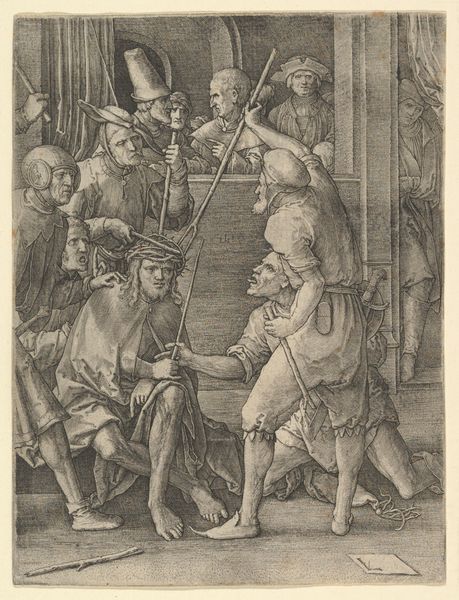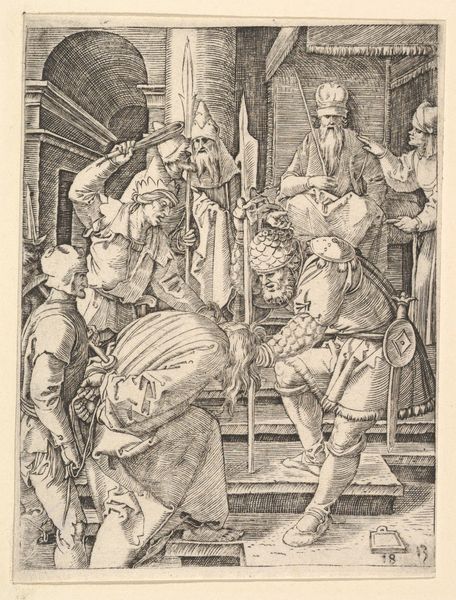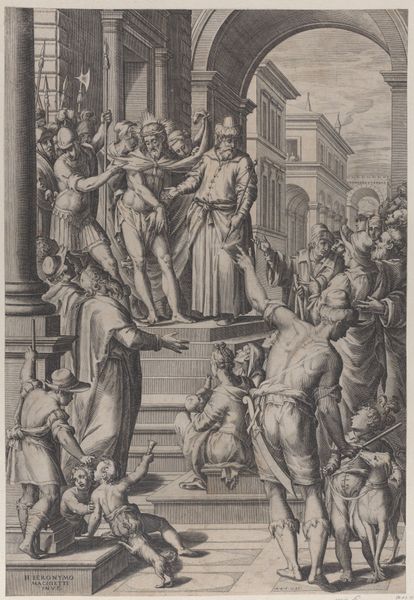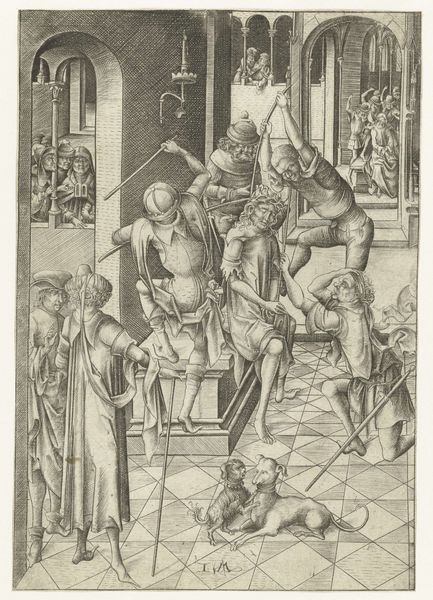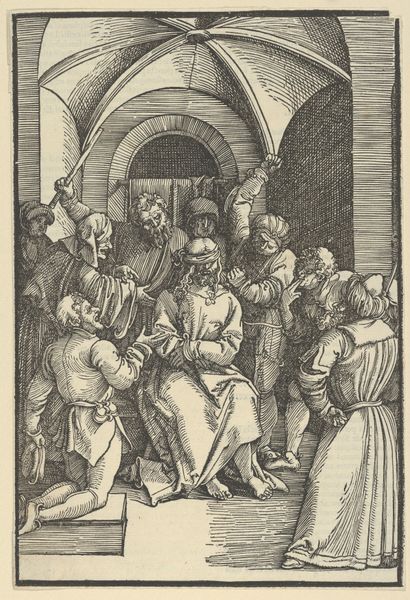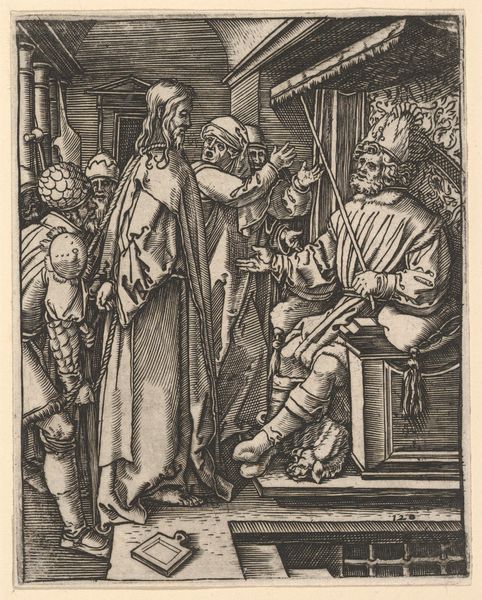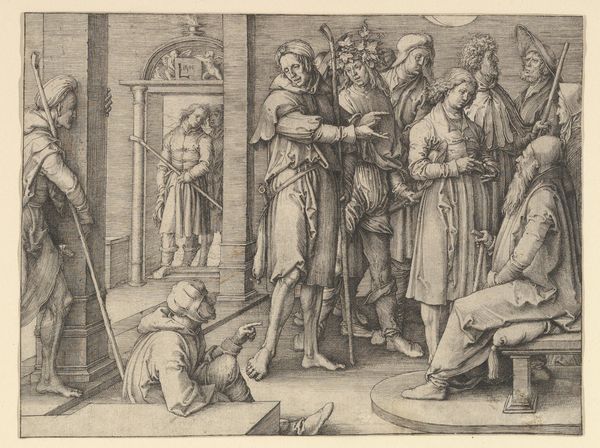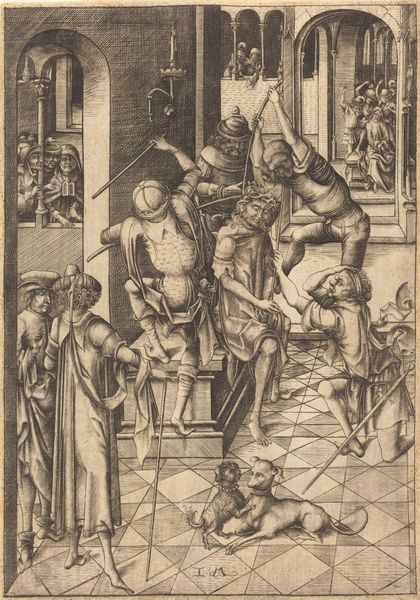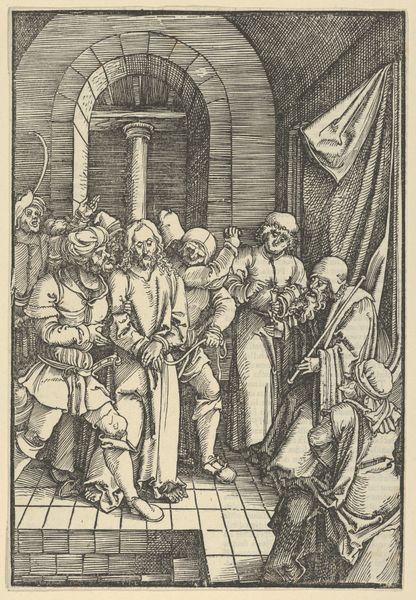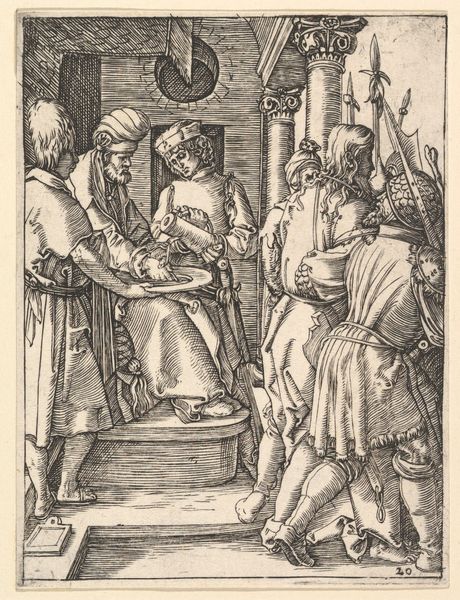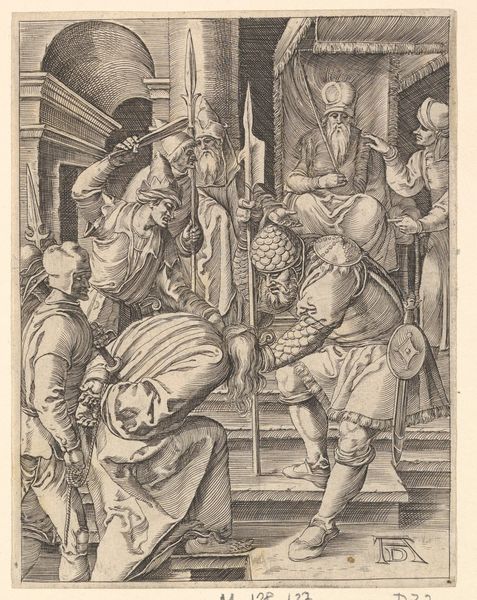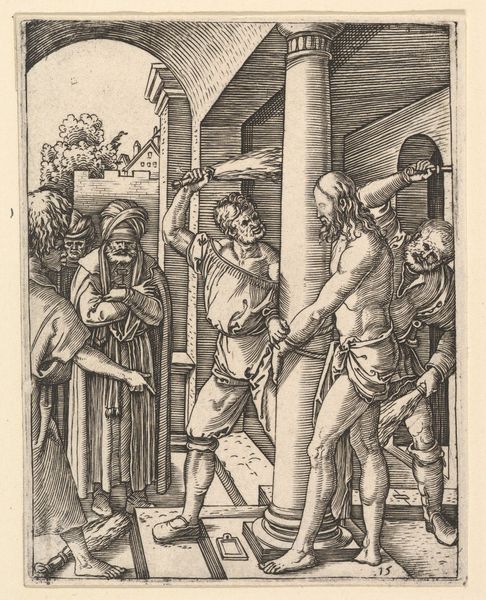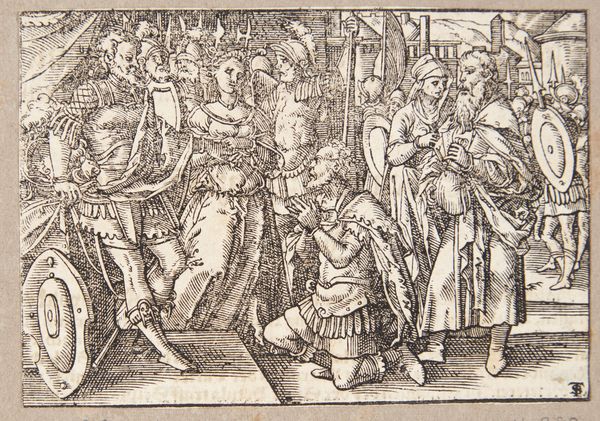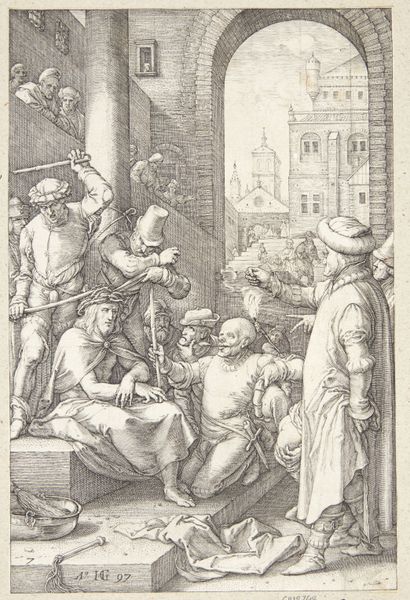
print, engraving
#
medieval
#
narrative-art
# print
#
figuration
#
history-painting
#
northern-renaissance
#
engraving
Dimensions: 6 11/16 x 5 in. (16.99 x 12.7 cm) (image, trimmed within platemark)
Copyright: Public Domain
Lucas van Leyden etched "Christ Crowned with Thorns," capturing a pivotal moment from the Passion of Christ. The crown of thorns, a mock symbol of royalty, is central here, dripping with a cruel irony. This motif echoes through art history, reappearing in countless depictions of Christ's suffering. The thorns themselves—symbols of pain and humiliation—take on a life of their own, evolving from simple instruments of torture to potent emblems of sacrifice. Consider how, in earlier Byzantine icons, Christ's suffering is often downplayed, replaced by a sense of divine serenity. Yet, here, the raw emotion is palpable. The psychological impact of this image is profound. The act of crowning, typically associated with honor, is perverted into a display of barbarity. This dissonance taps into a deep, subconscious unease, reminding us of humanity's capacity for both cruelty and compassion. This symbol has resurfaced, evolved, and taken on new meanings in different historical contexts.
Comments
minneapolisinstituteofart almost 2 years ago
⋮
Eager to intensify their compassion for Christ, people hungered for details about his physical pain. Passion narratives reported that during the Crowning with Thorns, the tormentors pushed down so forcefully that "the crown pierced Christ's head and brains." The men pounded until "the points of the thorns reached into his glorious mouth, sticking out through his throat." The treatise Speculum passionis specified that the crown had 77 thorns, with three points on each thorn.
Join the conversation
Join millions of artists and users on Artera today and experience the ultimate creative platform.
